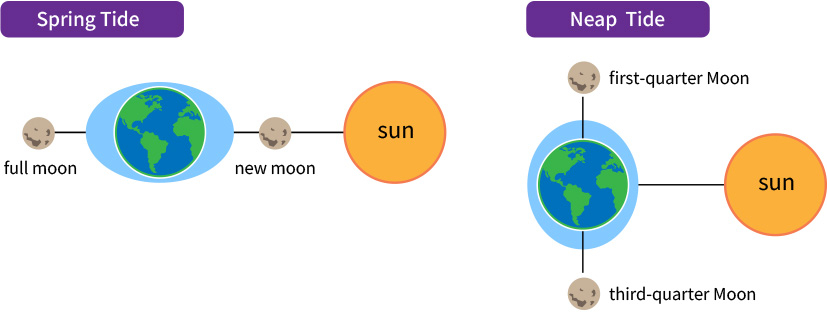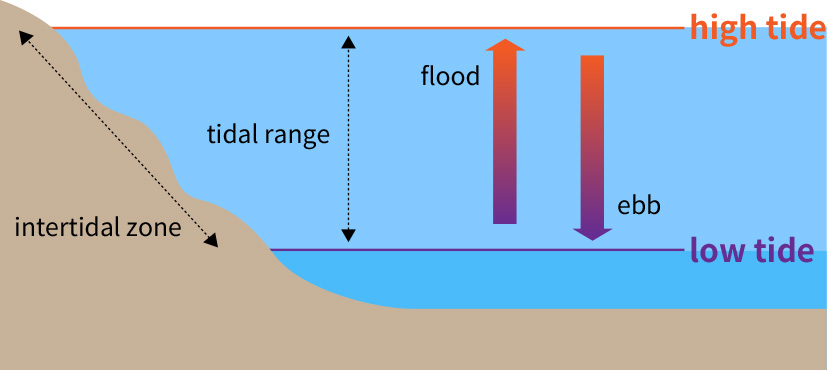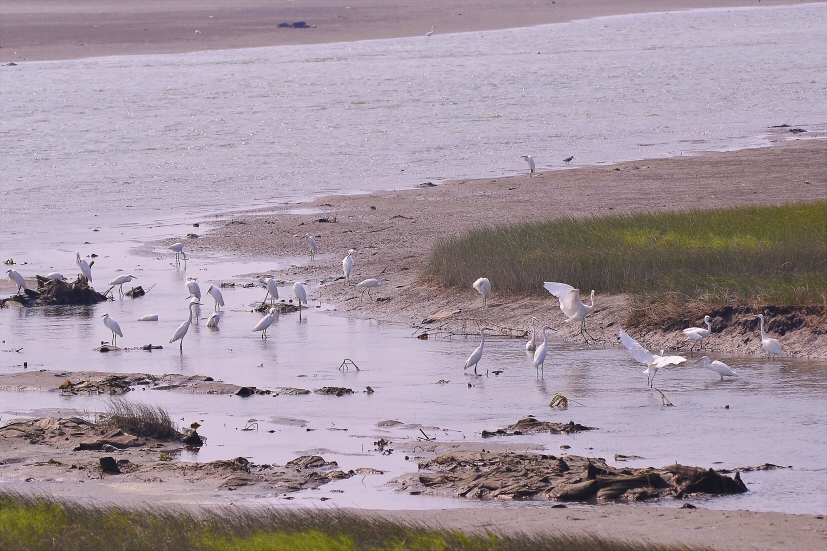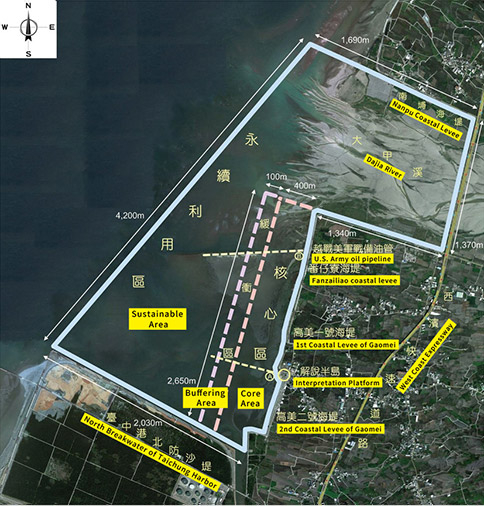The most renowned natural environment in Gaomei is absolutely the Gaomei Wetlands, which is the most iconic grass marsh coastal wetland in Taiwan. Before further introduction, let us talk about what defines a wetland.
A wetland is a transitional zone between aquatic and terrestrial environments. Its soil absorbs the water for a long time, and is suitable for some unique plants distinct from terrestrial ones. The wetland is the most productive ecosystem in the world, similar to tropical forests. In addition, wetlands are shelters for migratory birds during their long journeys. Another feature of the wetland is its ability to purify water.According to research, one-hectare of wetland purifies water as efficiently as a wastewater treatment plant, a cost equivalence of US$123,000. Unfortunately, people in the past ignored this productivity and have damaged the wetlands by constructing industrial parks. Wetlands can be categorized into freshwater wetlands and coastal wetlands depending on their locations. Coastal Wetlands stabilize the coastline and are influenced by tides.

The intertidal zone refers to the area that is submerged in high tides and exposed in low tides. Organisms living in the intertidal zone evolve many interesting behaviors as a result of the long-term influence of the tidal cycle.

Gaomei wetlands, now a distinctive grass marsh coastal wetland, emerged due to sand accumulation caused by the north groin. Back in 1932, this region used to be a bathing beach. Later the beach was closed and became part of the Taichung Port. The effect of the groin accelerated the development of the wetland.
Gaomei Wetlands is located in the estuary of the Dajia River. Because of the subtropical monsoon climate, it is hot and rainy in the summer, between June and August, and cold and dry in the winter. The south bank of the Dajia River is near the estuary and is abundant in food resources making it an important habitat for the migratory birds.
Gaomei Wetlands possesses diverse habitats for organisms to inhabit, including grass marshes, sands, mud flats, gravels, streams, and low tidal zones. Therefore, compared with other wetlands, the biodiversity in Gaomei Wetlands is remarkable.




